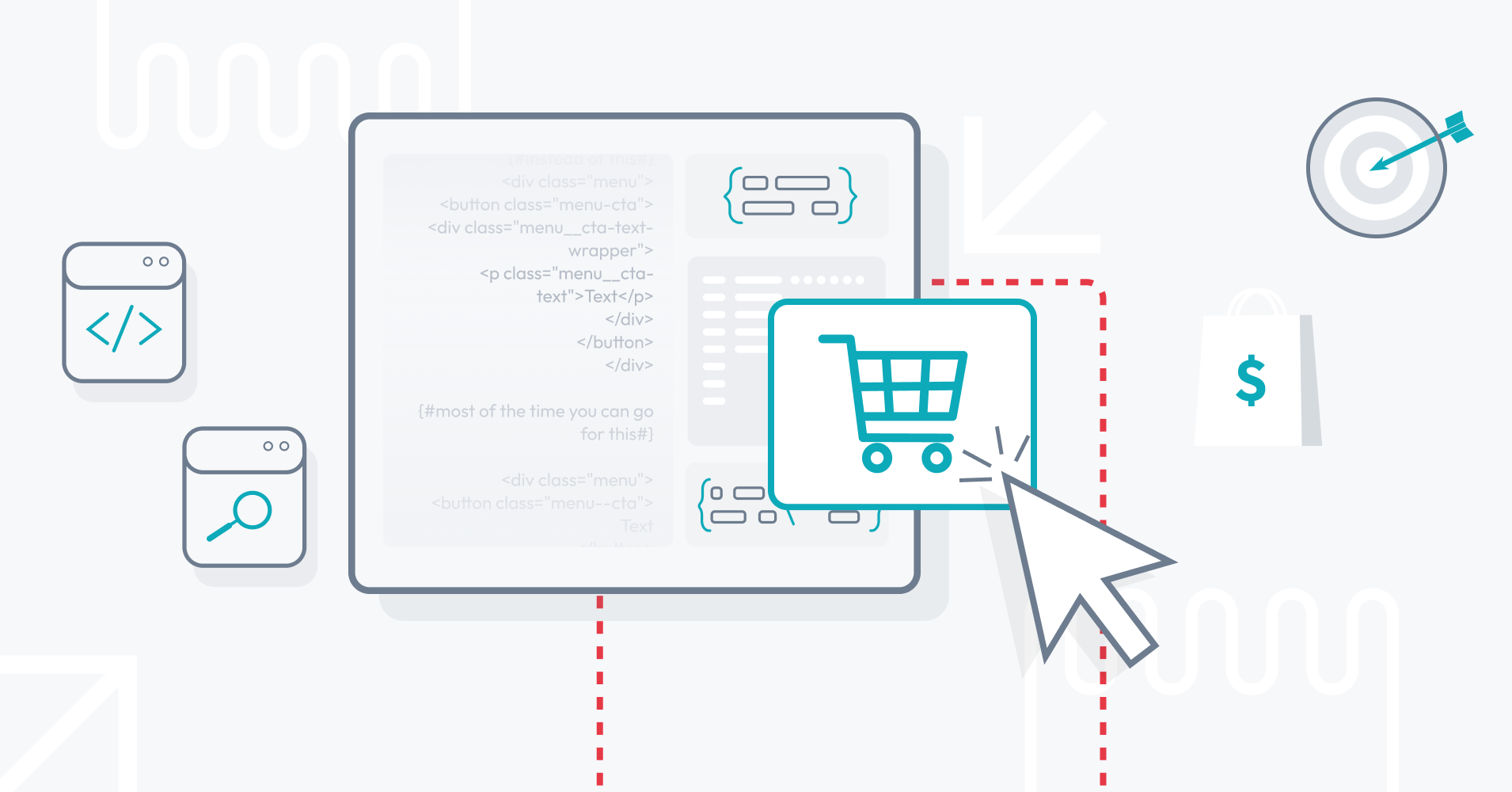In the world of eCommerce, where competition is constantly increasing, online store owners must reach for innovative tools to increase sales and build customer loyalty. The key to success is the right IT solutions that automate sales processes, personalize the shopping experience and integrate with various systems. In this article, we outline the most effective ways to increase the efficiency of your online store to stay ahead of the competition.

How to increase sales in an online store?
Increasing sales in an online store is one of the most important challenges facing e-Commerce owners. In order to successfully compete in the market, it is not enough just to offer attractive products.
Here are some proven ways to help increase sales in your online store.
Optimize the purchase path (Customer Journey)
One of the most important factors affecting conversion is the fluidity and intuitiveness of the shopping process. The faster and easier a user goes through the steps, the greater the chance of completing the transaction. What is worth improving?
- Responsiveness of the website. Make sure your store works flawlessly on all devices, including smartphones and tablets. More and more purchases are being made on mobile devices, so responsiveness is a key element in increasing sales.
- Transparent and simple shopping process. Minimize the number of steps to finalize an order. Remove unnecessary fields in forms, shorten the registration process, and even enter a purchase option without creating an account.
- Ease of payment. Implement fast, convenient payment methods such as BLIK, PayPal, Google Pay or Apple Pay to reduce the risk of cart abandonment at the payment stage.
Personalization of the offer
Personalization is one of the most powerful tools in eCommerce, allowing you to tailor your offer to each customer's unique needs and preferences. How to do it?
- Product recommendations. Use shopping data to suggest products to customers that may interest them. Artificial intelligence-based algorithms can analyze browsing and purchase history to suggest personalized offers.
- Personalized e-mails. Email marketing campaigns can be much more effective if they are tailored to user behavior. Send messages reminding users of abandoned shopping carts or offering discounts on products the customer has viewed.
- Dynamic content on the site. With tools such as dynamic content, you can customize content on your homepage, banners or promotions based on user preferences.
Read more: How to Integrate AI into Your Business?
Build customer trust and loyalty
Customer trust is a key factor in increasing sales. Consumers are more likely to buy from stores that inspire their trust. Here are some ways to build credibility:
- Reviews and testimonials. Introduce the ability to add product reviews. Customers are more likely to buy when they see positive reviews from other users.
- Loyalty programs. Creating a program where customers collect points for purchases or receive discounts on future purchases can significantly increase their engagement and frequency of purchases.
- Security certifications. Clear markings on payment security and data protection (such as SSL certificates) make customers feel more secure during transactions.
Page loading speed
Page speed has a huge impact on conversions. According to research, even a one-second delay in page loading can reduce conversions by 7%. How to take care of speed?
- Optimize graphics: Ensure that images are properly compressed and do not weigh down the page load.
- Using a CDN (Content Delivery Network): Enable fast delivery of content to users, regardless of their location.
- Remove elements that slow down the site: Remove unnecessary scripts and plugins that can slow down your site.
Improved analytics tools
Data is gold in eCommerce. Without in-depth analysis of traffic and user behavior, it's difficult to understand exactly what influences purchasing decisions. That's why it's a good idea to implement advanced analytics tools, such as Google Analytics, Hotjar, or artificial intelligence-based tools that:
- Track user behavior: They analyze which products are viewed most often, how long customers spend on the site and at what point they leave the buying process.
- Segment customers: These tools help segment customers so you can better tailor marketing campaigns.
- A/B testing: Testing different versions of your site, content and offers allows you to find the best way to convert.
Custom E-commerce Integration - We Have Everything You Need!
Many online store owners find it difficult to connect different systems - from payment platforms to external analytics tools. We know how to do it efficiently and effectively. Our IT solutions offer out-of-the-box integration with multiple platforms, including ERP, CRM, logistics systems and marketing tools.
This will make your operations run smoothly, allowing you to manage orders, inventory and customer relationships more efficiently.
Online business automation
Automation in online business is one of the key elements to optimize processes, save time and resources, and increase operational efficiency. With modern tools that automate repetitive tasks, entrepreneurs can focus on growing their business instead of wasting valuable hours on manual tasks. In the world of e-Commerce, automation helps improve both daily operations and marketing strategies.
Sales process automation
Sales process automation helps streamline the entire buying cycle, from the moment a user enters the site to the finalization of the order. What processes can be automated?
- Order processing: Once an order is placed, the system can automatically process the payment, generate an invoice and send it to the customer, as well as initiate the logistics process, i.e. packing and shipping the goods. This reduces order processing time and eliminates the risk of manual errors.
- Order status notifications: Automatically send emails and SMS to customers with information about changes in the status of their order (e.g. order placed, shipping in progress, delivery).
- Inventory management: The system automatically updates inventory after each order, which avoids the situation where a customer orders a product that is no longer in stock. It is also possible to set up automatic orders with suppliers when inventory falls below a certain level.
Customer service automation
Customer service automation helps eCommerce companies respond faster to users' needs and provide them with an excellent shopping experience, even with limited human resources. What tools are worth implementing?
- Chatbots: Chatbots can automatically answer customers' most frequently asked questions, such as product information, stock availability, order status or return procedures. This allows customers to receive answers immediately, without the need for a support team.
- Automated ticket systems: Creating automated requests in the helpdesk system, which are prioritized according to the problem, allows for faster handling of the most challenging cases.
- Automated customer satisfaction surveys: After a transaction is completed, the system can send automated surveys to help collect customer feedback and monitor satisfaction levels.
Marketing Automation
Marketing automation is one of the most important tools in the arsenal of a modern eCommerce business. It allows you to better reach customers, increase engagement and maximize conversions with minimal effort. The main benefits of marketing automation include:
- Personalized email campaigns: You can automatically send personalized messages to customers based on their past behavior, such as cart abandonment, viewing specific products or previous purchases. Marketing automation tools analyze user data and tailor message content to be as relevant as possible.
- Remarketing: automation makes it easy to track users who have visited a store but have not made a purchase. Automated remarketing ads (e.g., Google Ads, Facebook Ads) can display products that customers have browsed, increasing the chance that they will return and complete a purchase.
- Dynamic offers: Automatically generate special offers for selected customer segments based on analysis of their purchase preferences or transaction history.
Automation of logistics and inventory management
By automating logistics and inventory management, you can significantly improve operational efficiency and reduce costs. What activities can be automated?
- Inventory tracking and management: Automated warehouse management systems monitor inventory in real time, eliminating the risk of over- or under-stocking. Automation also allows orders to be generated with suppliers automatically when inventories reach a certain level.
- Automatic generation of shipping labels: Once an order is placed, the system automatically generates shipping labels and shipping documents, speeding up the process of packing and shipping goods.
- Integration with courier companies: Automated systems can integrate directly with courier service providers, allowing them to automatically schedule parcel pick-ups and provide shipment information to the customer.
Accounting and billing automation
Automating accounting and billing processes allows the company to manage its finances efficiently and reduce errors. Here are some examples of the use of automation in this area:
- Automatic invoice generation: eCommerce systems can automatically generate invoices for each order and send them directly to the customer, streamlining the invoicing process and eliminating the need for manual handling.
- Automation of financial reports: With integrated reporting tools, reports on sales, expenses and other key financial indicators can be automatically generated.
- Integration with ERP systems: ERP systems enable full automation of financial, inventory and sales processes, ensuring data consistency and real-time performance tracking.
Automate returns and complaints processes
Returns and complaints are an integral part of running an online business, so automating this process can significantly impact operational efficiency and customer satisfaction.
- Automatic generation of return labels: Customers can receive an automatically generated return label, which speeds up the entire return process.
- Returns management systems: Automated tools can monitor returns and complaints, informing the customer at every stage, streamlining the process and increasing transparency.
With automation, you can focus on growing your business while technology takes care of the rest.
Experts in E-commerce Solutions: High-quality Software for Your Online Shop
Our company specializes in providing modern and scalable solutions for the e-Commerce industry. Why should you work with us?
Dedicated and scalable solutions
We offer technologies tailored to your needs. Functional, scalable and supporting your operations every step of the way.
Experience
We've had the pleasure of working with many e-Commerce clients, supporting them with technologies that really increase sales and improve management.
Quality
When it comes to quality, we don't compromise. We want to make sure your business can handle any situation.
Comprehensiveness
We provide full support at every stage, from needs analysis to design and optimization of the finished system.
Technologies for the future
We know which solutions work well over the years. We make sure that technology always keeps pace with your business and nothing stands in the way of development.
The ecommerce industry has no secrets for us
We know all the challenges that online stores face. We have been working for years to perfect solutions that help our clients increase profits, reduce costs and optimize sales processes. Our experience allows us to approach each company individually, tailoring IT solutions to your specific needs. This allows us to offer you unique, effective and sustainable technology solutions.





















